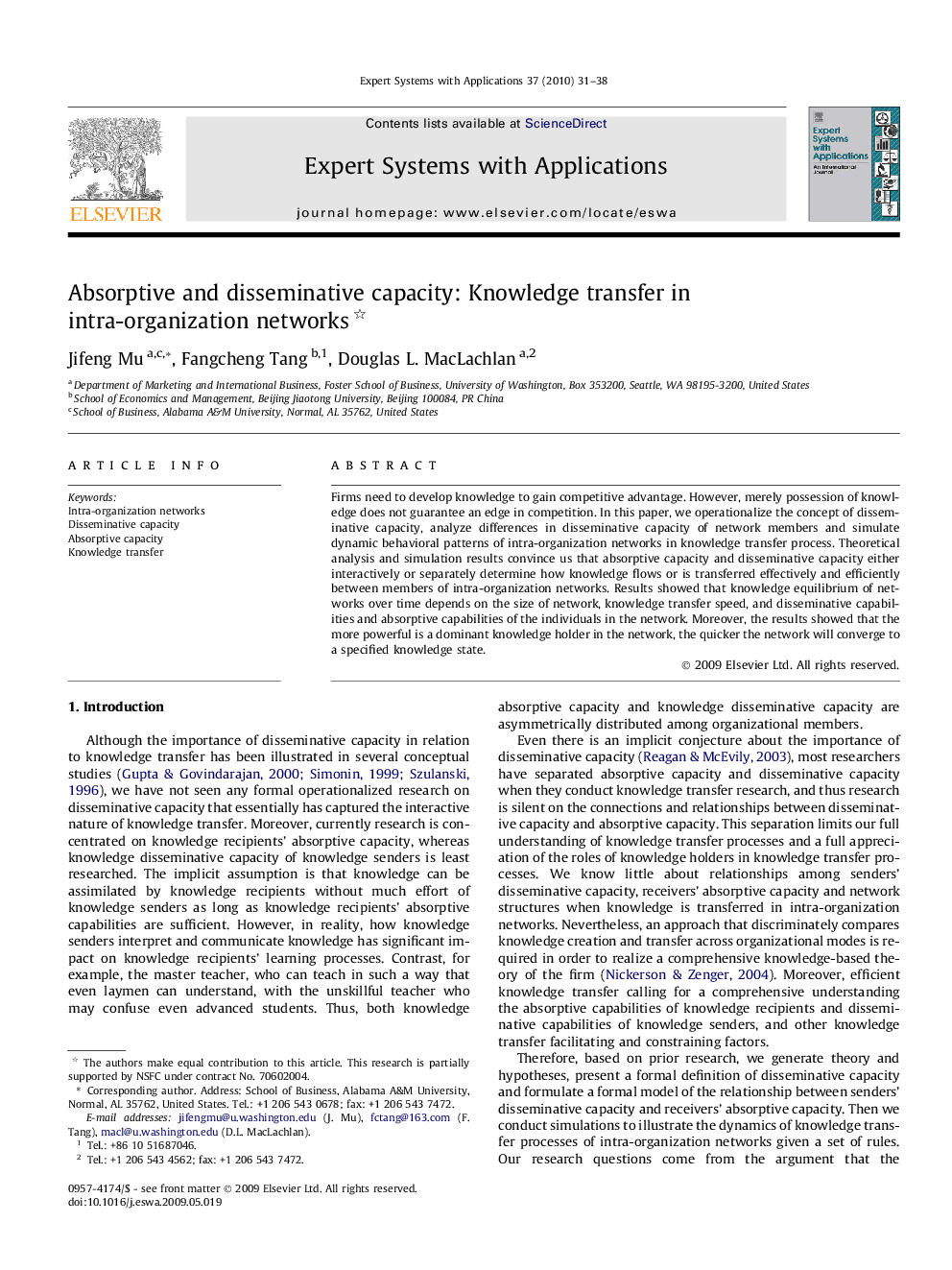| Article ID | Journal | Published Year | Pages | File Type |
|---|---|---|---|---|
| 387335 | Expert Systems with Applications | 2010 | 8 Pages |
Firms need to develop knowledge to gain competitive advantage. However, merely possession of knowledge does not guarantee an edge in competition. In this paper, we operationalize the concept of disseminative capacity, analyze differences in disseminative capacity of network members and simulate dynamic behavioral patterns of intra-organization networks in knowledge transfer process. Theoretical analysis and simulation results convince us that absorptive capacity and disseminative capacity either interactively or separately determine how knowledge flows or is transferred effectively and efficiently between members of intra-organization networks. Results showed that knowledge equilibrium of networks over time depends on the size of network, knowledge transfer speed, and disseminative capabilities and absorptive capabilities of the individuals in the network. Moreover, the results showed that the more powerful is a dominant knowledge holder in the network, the quicker the network will converge to a specified knowledge state.
